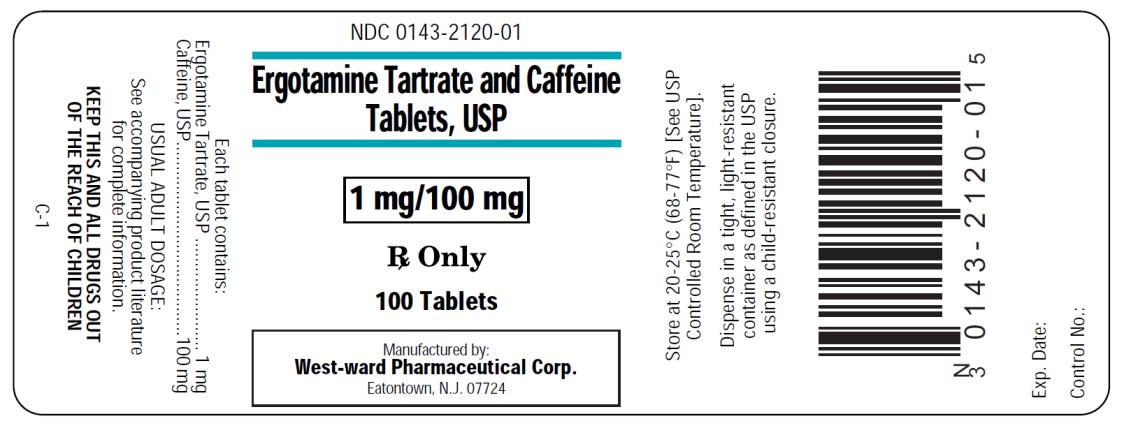FDA records indicate that there are no current recalls for this drug.
Are you a medical professional?
Trending Topics
Ergotamine Recall
Get an alert when a recall is issued.
Questions & Answers
Side Effects & Adverse Reactions
Coadministration of ergotamine with potent CYP 3A4 inhibitors such as protease inhibitors or macrolide antibiotics has been associated with serious adverse events, for this reason, these drugs should not be given concomitantly with ergotamine (see CONTRAINDICATIONS). While these reactions have not been reported with less potent CYP 3A4 inhibitors, there is a potential risk for serious toxicity including vasospasm when these drugs are used with ergotamine. Examples of less potent CYP 3A4 inhibitors include: saquinavir, nefazodone, fluconazole, fluoxetine, grapefruit juice, fluvoxamine, zileuton, metronidazole, and clotrimazole. These lists are not exhaustive, and the prescriber should consider the effects on CYP3A4 of other agents being considered for concomitant use with ergotamine.
There have been a few reports of patients on ergotamine tartrate and caffeine therapy developing retroperitoneal and/or pleuropulmonary fibrosis. There have also been rare reports of fibrotic thickening of the aortic, mitral, tricuspid, and/or pulmonary valves with long-term continuous use of ergotamine tartrate and caffeine. Ergotamine tartrate should not be used for chronic daily administration (see DOSAGE AND ADMINISTRATION).
Legal Issues
There is currently no legal information available for this drug.
FDA Safety Alerts
There are currently no FDA safety alerts available for this drug.
Manufacturer Warnings
There is currently no manufacturer warning information available for this drug.
FDA Labeling Changes
There are currently no FDA labeling changes available for this drug.
Uses
Indicated as therapy to abort or prevent vascular headache, e.g., migraine, migraine variants or so-called “histaminic cephalalgia”.
History
There is currently no drug history available for this drug.
Other Information
Ergotamine Tartrate and Caffeine Tablets USP
ergotamine tartrate USP . . . . . . . . . . . . . . . . . .1 mg
caffeine USP . . . . . . . . . . . . . . . . . . . . . . . . . . .100 mg
In addition, each tablet contains the following inactive ingredients: colloidal silicon dioxide, compressible sugar, corn starch, magnesium stearate, mannitol, microcrystalline cellulose, sodium starch glycolate, sugar, and tartaric acid. Polishing and Film Coating Solutions may contain the following: FD&C Blue Lake #2, FD&C Yellow Lake #6, hydroxypropyl methylcellulose, polyethylene glycol, and titanium dioxide. The printing ink contains: amide resin, black pigment, natural resin, and wax.
Sources
Ergotamine Manufacturers
-
West-ward Pharmaceutical Corp
![Ergotamine (Ergotamine Tartrate And Caffeine) Tablet, Film Coated [West-ward Pharmaceutical Corp]](/wp-content/themes/bootstrap/assets/img/loading2.gif)
Ergotamine | West-ward Pharmaceutical Corp
![Ergotamine (Ergotamine Tartrate And Caffeine) Tablet, Film Coated [West-ward Pharmaceutical Corp] Ergotamine (Ergotamine Tartrate And Caffeine) Tablet, Film Coated [West-ward Pharmaceutical Corp]](/wp-content/themes/bootstrap/assets/img/loading2.gif)
Procedure: For the best results, dosage should start at the first sign of an attack.
Adults: Take 2 tablets at the start of attack; 1 additional tablet every ½ hour, if needed for full relief (maximum 6 tablets per attack, 10 per week).
Early Administration Gives Maximum Effectiveness.
Maximum Adult Dosage: Six tablets is the maximum dose for an individual attack.
Total weekly dosage should not exceed 10 tablets. Ergotamine tartrate and caffeine-tablets should not be used for chronic daily administration.
In carefully selected patients, with due consideration of maximum dosage recommendations, administration of the drug at bedtime may be an appropriate short-term preventive measure.
Login To Your Free Account


